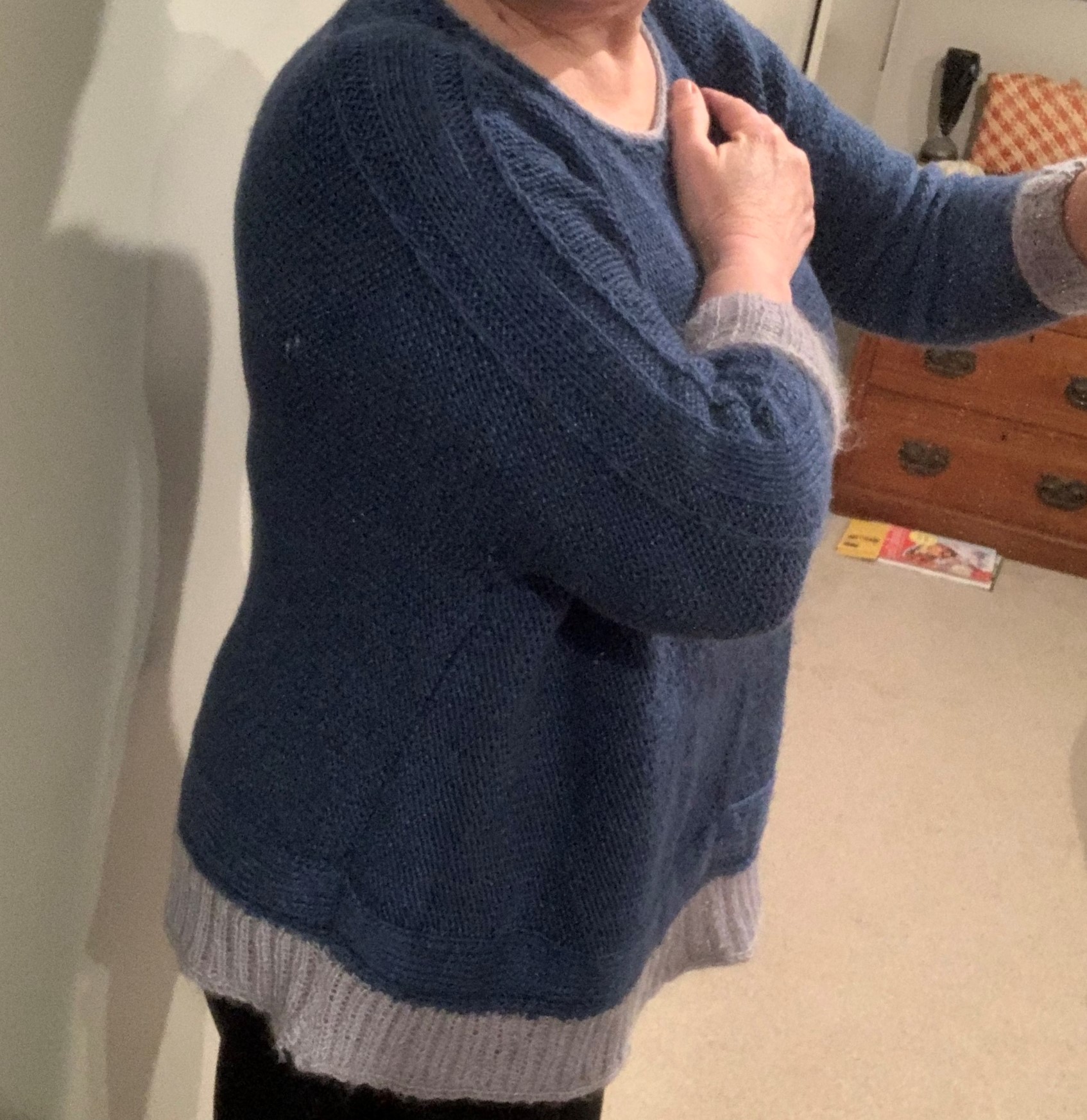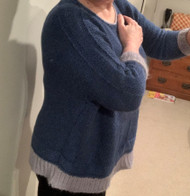The magic loop and mindfulness
Posted by Jo Morris on 20th Jul 2021

This relaxed jumper pattern, Hazy Lanes by Susanne Sommer, took my fancy so I paid for and downloaded all 24 pages of it (24!) only to discover that the last 12 pages are the German language version of the pattern. Owning a wool shop gives me access to many lovely yarns and I decided to showcase the beautiful Rowan Merino Silk DK in ocean blue for the body of the jumper. For the ribbing, cuffs and neck edge I chose Broadway Mohair 4 ply in soft grey.
I began knitting at Easter and soon admired Susanne Sommer's mathematical ability. She provides detailed instructions for every possible combo of the variables you have to select for your jumper, ie bust size, sleeve length, neck width and jumper length. Following the pattern to knit my version of the jumper required concentration and a highlighter pen. Its construction is really clever. The body of the jumper is knitted sideways on straight needles in pieces that are knitted together with 3 needle joins, then the sleeves, ribbing and neck trim are added using circular needles. Mostly it is done in reverse stocking stitch but the patterns down the sleeves and around the bottom of the jumper add interest - and demand concentration and the meticulous use of stitch markers.
For me the most challenging part was knitting each sleeve in the round, using the magic loop method (on 80 cm Knitpro circulars) to achieve a tube of 45 stitches at its narrowest and with a pattern running all the way from neck to wrist. Had I knitted the sleeves flat on straight needles, and sewed a seam from armpit to wrist, I would have completed the jumper far more quickly. If I'd thought of that sooner,I could probably have done it, but it didn't occur to me until I was partway down the first sleeve and lamenting my slow progress.
By the end of Easter I'd knitted about half the jumper but finishing it became a Sunday-only task as I needed unbroken time on it while I was fresh, not tired after a day at work. But soon after Easter I learned that Rowan had discontinued the entire range of Merino Silk DK that my jumper would showcase, rendering it worthless as a shop sample! But I soldiered on and completed the jumper by mid May - and I love it.
Driving to the shop on day 1 of wearing my new jumper, I glanced down at my hands on the steering wheel and realised I'd finished one cuff in an i-cord bind off (cast off) and the other in a different style of loose cast off. The latter was what the cuff pattern called for and I'd completed the first sleeve that way weeks earlier. But meantime, I'd cast off the entire bottom of the jumper using the i-cord cast off, as the pattern required, and I liked that look. With the i-cord cast off fresh in my mind, and eager to finish the jumper by completing the second sleeve, I'd assumed that it also used the i-cord cast off. Wrong! The only time I didn't look at the pattern really closely and I made a mistake. Darn it. That evening I picked up the cast off stitches on the second cuff and added an i-cord cast off. Perfect - well nearly.
Knitting this jumper forced me to practice, or learn, techniques that I've resisted till now - including using circular needles, the magic loop method, and two different loose styles of casting off. Knitting in the round also made me abandon my usual "lever" knitting style, where I hold one straight needle in my armpit and throw the wool over that needle to make a stitch. With circular needles I had to work out how to hold the short tips while passing the yarn over the needle. I'm still pretty slow but I definitely improved as I did the ribbing, sleeves and cuffs. And I've noticed that I'm not such a "thrower" on straight needles now, but can use my forefinger to flick the yarn over the needle when creating a stitch. That's how our knitting tutors at the shop teach beginners to knit.
The moral of the story is that it's never too late to learn new knitting tricks that will expand the range of patterns you can tackle. And since knitting is a form of mindfulness, the quiet time and concentration required to learn new techniques has to be good for the brain - especially the older brain!

